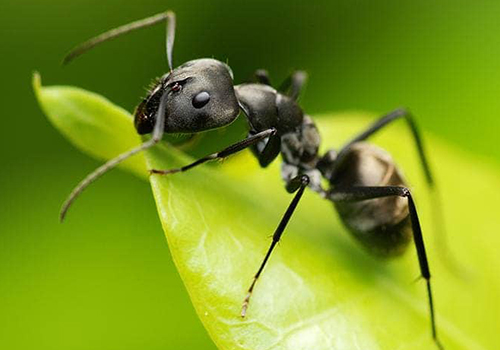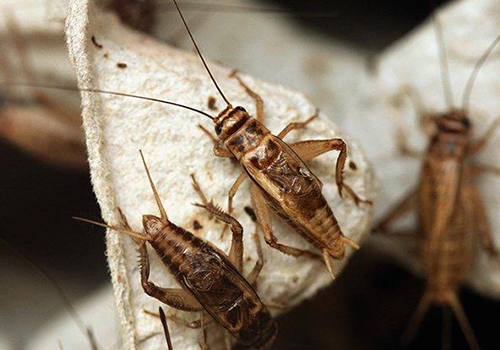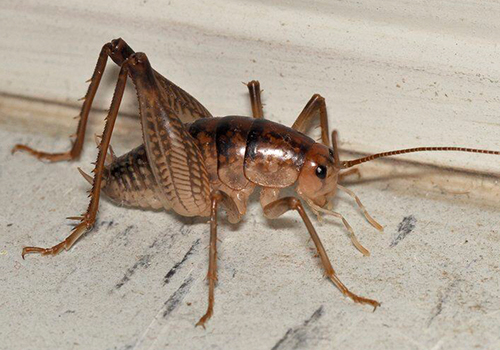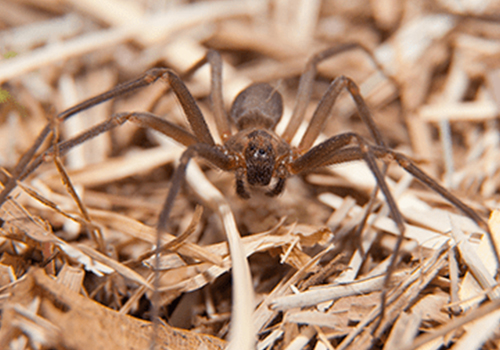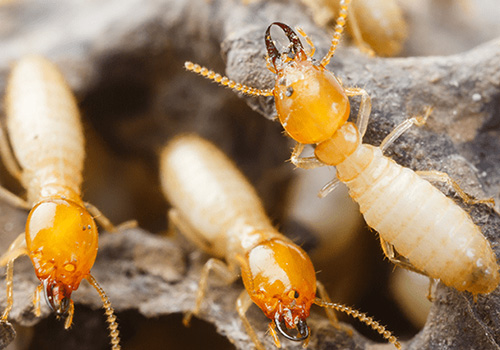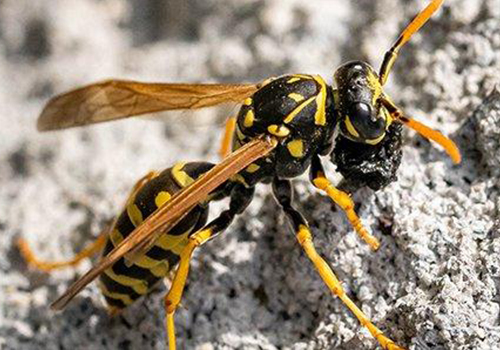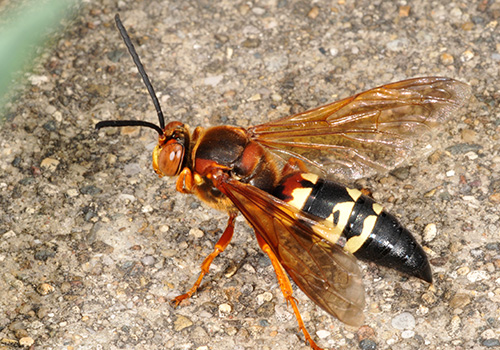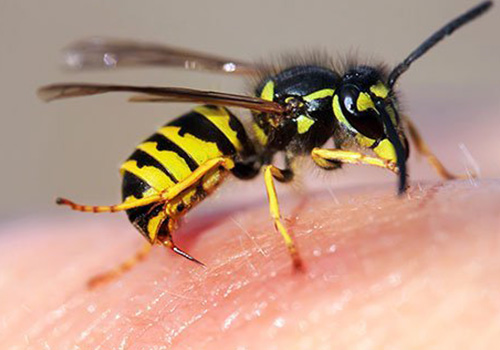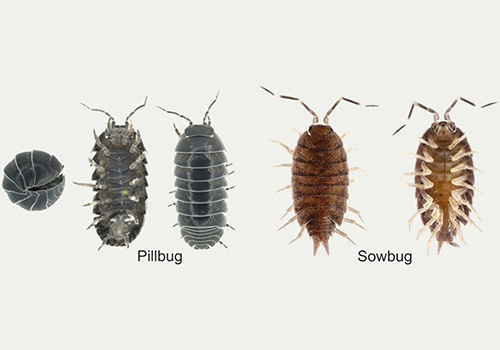Useful Information About Different Types of Pests
Pests Around your home
All
- All
- Ants
- Bed Bugs
- Bees
- Beetle
- Centipede
- Cockroaches
- Crickets
- Fleas
- Flies
- Millipede
- Mosquito
- Multicolored Asian Ladybird beetle
- Rodents
- Spiders
- Termite
- Ticks
- Wasps, Hornets, Yellow Jackets
- Additional Pests
Nuisance Ants - generally brown or black in color; typically enter home through openings; infest foods and can possibly transmit diseases crawling over waste
Fire Ants - vary in size and are colored black and yellowish red; build mounds in any type of soil and enter a home through vents and HVAC systems
Bed bug - reddish-brown in color and typically the shape and size of an apple seed; can be found in a variety of places, not just beds; hide from light during the day and come out at night to feed on a host
Carpenter bees - male carpenter bees have a yellow spot on their face, but a female has a black face; because males are territorial, they typically become aggressive when approached
Honeybee - colony contains three separate castes, which includes the workers, drones, and queen; do not have a stinger; only present in the early summer
Longhorn beetle - can be recognized by their long antennae, which can extend the entire length of their body; adults are typically black with yellow or orange patterns
Drugstore beetle - all brown or reddish brown; have long rows of fine hairs that make up their wing covers; abundant in warmer regions or in heated structures in temperate climates
Ground beetle - very diverse and come in many colors, but in the south, they are typically dark brown or a metallic black in color; mostly unable to fly
Saw-toothed Grain beetle - brown beetles that have flattened bodies, which allow them to crawl tighter spaces; adults have wings, yet cannot fly
House centipede - wormlike body with long antennae and a grayish-yellow body; their body is marked with three long dark stripes; if these centipedes are seen frequently, this is a sign that their prey arthropods are in abundance
Stone centipede - elongated and flattened with adults possessing 15 pairs of legs and 18 body segments; these bites are typically compared to a wasp sting; require moist environment to survive
American Cockroaches - brown in color and largest of the house-invading cockroaches; typically, 1 1/2" long; opportunistic feeders, but prefer sweets and decaying organic matter
Smoky brown Cockroaches - mahogany in color; fly from trees onto houses; attracted to homes due to trashcans maintained improperly and pet food left out on a deck or patio
Oriental Cockroaches - dark brown, nearly black with an oily sheen on their bodies; prefer moist, dark areas; cockroaches contaminate far more food than they eat
German Cockroaches - medium brown in color with two dark stripes located on their pronotum; fully developed wings but do not fly; prefer moist environment with relatively high temperature
Field Cricket - field crickets usually black in color; male crickets chirp by rubbing their upper wings together
House Cricket - is light yellowish-brown in color with three dark bands on the head; crickets are most active at night and are attracted to lights
Camel crickets - either light tan or dark brown; these crickets have long legs and humped backs; have no wings so are unable to chirp; because of their long legs, they can jump several feet
Fleas - these insects are flattened from each side and are small, dark, and have no wings; usually found embedded in hair found on the skin of mammals; important because of the diseases they carry, such as the bubonic plague
Common fruit fly - common where food rots and ferments, such as restaurants, supermarkets, and homes; have either bright red or dark eyes; head and thorax are tan with a black abdomen; lay eggs near fermenting food or other organic materials that are moist
House fly - female house flies are typically larger than males; they have a duller gray color along with their thorax that has four narrow black stripes; without food, they can only survive 2 or 3 days
Millipede - has a variety of shapes and sizes, but all millipedes have a generic shape that consists of a head and elongated, circular trunk; millipedes differentiate from centipedes because they have only one pair of legs per segment; they eat decaying plant matter
Culex Mosquito – commonly known as the southern house mosquito; all brown in color, ranging in lighter and darker shades across their body; they search for their blood meals at night and are nocturnal
Anopheles Mosquito – this mosquito has long legs and smaller wings; the female genus of this mosquito species transmits malaria
Multicolored Asian Ladybird Beetle – also known as ladybugs; typically orange or red with black spots; they have the tendency to hibernate in lighter colored structures; if an Asian ladybug is disturbed, it can leave a brown colored stain on a surface, which is a defense chemical called reflex bleeding
Mice – has a pointed snout with big ears; they are small and thin; fur ranges between gray or light brown; tail is consistently dark
Norway rats – also known as sewer rats or brown rats; color ranges from a lighter reddish brown to black; small ears and eyes with a more rounded snout
Roof rat – also known as black rats; they are small and commonly dark gray; a roof rat’s tail is longer than a Norway rat’s; common with other rodents, the roof rat will leave dark, grease-like marks in areas they consistently occupy
Black Widow – the adult female is usually jet black in color; the underside has the red hourglass marking that they are popularly known for; the male black widow is half the size of the female and is a lighter brown with a yellow hourglass marking
Brown Recluse – body colors ranges from a yellowish brown to dark brown; they have a darker brown violin marking on their backs; as their name indicates, brown recluses are found in more seclusive areas storage rooms and attics
Wolf spider – come in different shades of brown and have good vision due to their eyes being arranged in three rows; they are ground hunters and use their eyesight to their advantage; what sets the wolf spider apart from the brown recluse is they have thicker, sturdier legs than the brown recluse who has long, thin legs
Orb Weaver – this family of spiders varies greatly in size and appearance; the most noticeable feature of these spiders is the coordinated, circular webs they produce
Eastern Subterranean termite – it is easy to mistake a carpenter ant for a termite due to the wings they both have during their reproductive stage
Forman Subterranean termite - it is easy to mistake a carpenter ant for a termite due to the wings they both have during their reproductive stage
Ticks – are small and flattened with two separate regions of their bodies that merge; ticks possess a behavior known as “questing”; this behavior consists of a tick ascending onto tall grass and brush where it holds out its front pair of legs to wait for a host to pass by; once this happens, the tick will cling onto the fur or skin to find a satisfactory spot to feed
Paper wasps – coated in yellow and black stripes; get their name from the paper-like material in which they create their nests; will sting if they feel threatened; nests are shaped like an umbrella, hanging down from areas such as gutters, with hexagon-shaped units facing down
Bald faced hornets – not considered to be true hornets, but instead considered “aerial yellowjackets”; nests are usually built three feet above the ground in shrubs and bushes; although, nests in trees sixty feet above the ground has occurred
Eastern Cicada Killer Wasps – upper half of this wasp is rust colored, along with their wings, while the lower half is yellow and black striped; coloring is similar to yellowjackets; these wasps appear mid to late summer
Yellow Jackets – black and yellow striped markings; nests can be either aerial or terrestrial; no matter where the location is, each nest has an array of horizontal combs enclosed by a paper envelope
Common Pillbug and Sowbug – are not insects at all, but are instead crustaceans that have adapted to living on land; pillbugs are also known as Roly-Polies; the way these two bugs can be separated is by the fact that the sowbug cannot roll into a tight ball like the pillbug can
Earwigs – coloration is brownish to black with long, narrowed bodies; their defining characteristic is the appendage at the rear abdomen
Boxelder bug – obtains piercing/sucking mouthparts due to feeding on seeds of boxelder, maple, and ash trees; adult is bright red or orange with a black head and wing pads
Psocid – have a translucent or off-white appearance; when indoors, referred to as booklice; when outdoors, referred to as barklice; they feed on decaying organic matter, molds, and mildew; frequent in more humid and damp climates
Springtail – known as hexapods rather than insects; mostly grey, black, brown, or dark-colored; other species can even be white or brightly colored; typically, thin and elongated, but one group is stout and rounded; have no wings and can not fly, but can jump several inches; often are mistaken for flees
Brown marmorated stink bug – obtains piercing/sucking mouthparts to drink fluids; received its name from the brown markings covering its body; can be confused with native stink bugs, but can be differentiated by the white bands on its antennae
Kudzu Bug – small, green insect that obtains piercing/sucking mouthparts to drink fluids from plant tissue; shaped in a pentagonal form, and their outer surface is usually speckled an olive-green hue; can produce an odor if disturbed like stink bugs
Candle Moths – has a broad variation in both appearance and behavior; most are typically gray to brown with spots or lines located on their wings; strongly attracted to lights and are usually nocturnal
Idianmeal Moth – small with reddish-brown coloring at the ends of its wings; adult may be more visible, but the larvae cause the damage; the infested foods will be covered in silk and coated in fecal pellets
Rice weevil – coloration is a dull reddish brown; thorax has pitted punctures with four yellow-red spots on their wings; typically found in grain storage; adults can fly and are attracted to lights

